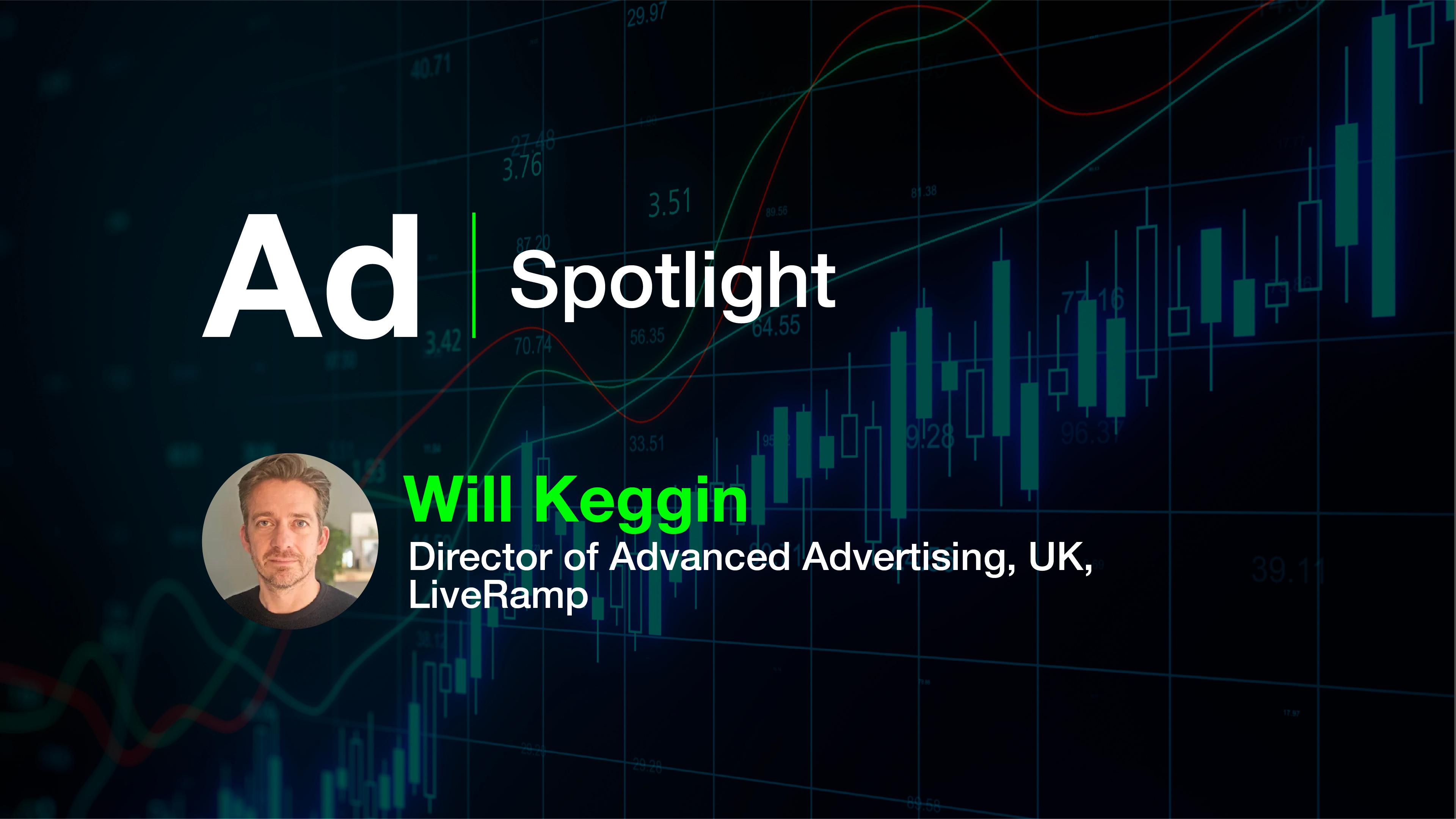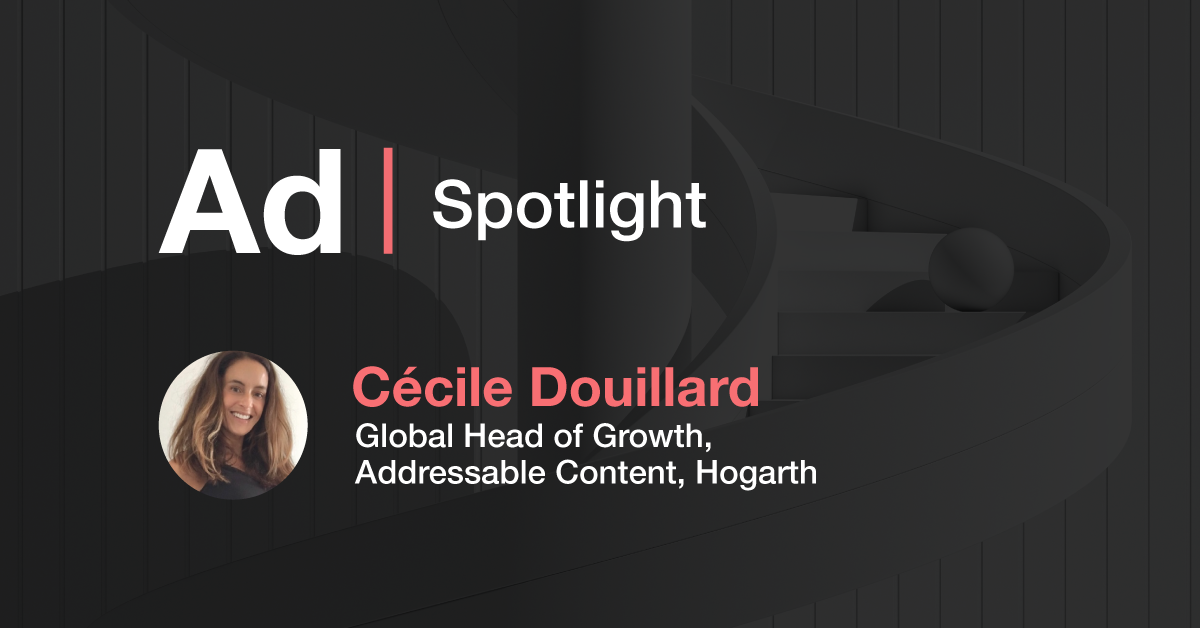Ad Spotlight: Will Keggin, Director of Advanced Advertising, UK, LiveRamp

Welcome to the Ad Spotlight series where we hear from a different guest from the industry each month to get an insight into the landscape of advertising as well as their own personal experiences.
Our guest this month is Will Keggin. Will is Director of Advanced Advertising, UK at LiveRamp, a leading data connectivity platform that enables companies and their partners to better connect, control, and activate data to transform customer experiences and generate valuable business outcomes.
He has his finger on the pulse when it comes to data and addressable, so who better to ask about the state of the industry.
Q: Why did you choose a career in advertising?
A: I started in advertising 15 years ago because I wanted to meet people, discuss new ideas, and have fun. As an industry where making contacts and thinking creatively was key, it ticked all the boxes.
I worked in out of home advertising at the start of the digital revolution where digital panel advertising was being introduced in tube and train stations. Different technologies to what I am working on now at LiveRamp, but just as valid.
Q: What are the biggest challenges facing the industry right now?
A: Breaking down data silos and finding ways to collaborate and use data consistently.
Advertisers want a consistent definition of an audience so they can reach who they want, with the messaging they want, when they want. But different stakeholders are bringing in their own data and walling it off and this fragmentation is leading to problems. We’ve got to find ways where advertisers can use their definition of an audience across every channel and do so in a safe and secure way.
Q: Sum up the future of advertising in three words.
A: Addressable, measurable, and permissioned. The latter referring to getting consent around data use to be able to unlock its value safely and securely.
Q: What is your biggest career highlight?
A: The last 6-12 months. As TV companies have been able to get the data they need from their customers it’s allowed us to start doing more interesting things. We have been able to work with the largest TV players in the UK to add data to their inventory and improve their ability to target, and crucially to measure cross platform reach, and incremental sales lift.
As more disperate data sets are connected to TV data, more value will be created. This will offer: advertisers increased returns on investment, TV media owners more efficient monetisation and access to incremental budgets and agencies better planning and buying capabilities. All of which can drive overall investment in TV and ultimately the great content we can all enjoy for free.
Q: …and biggest regret?
A: I probably left TV to go into digital too early. If I’d stayed in TV a little longer, I could have had a front row seat for some of the greatest developments we’ve seen in the industry.
Q: What is your favourite ad?
A: I’ll pick two. First, the Tango ads from the ‘90s. They were so distinct and I think we’ve lost some of the aspects which make ads memorable in recent years.
And the ‘Try Something Different’ campaign from Sainsbury’s. Not because of an amazing creative, although it did coincide with Jamie Oliver’s brand ambassador role but because the message was based on good planning. It was based on insight, data, and the knowledge that they didn’t need to dramatically increase market share to compete with Tesco. They just needed a small increase in basket size from current customers. So it was all about adding something new to the trolley to increase average basket value.
Let’s dive into what you see in your day-to-day role…
Q: What is one thing you’re confident will be the norm in the addressable TV world by 2023?
A: The levels of inventory which are addressable will undoubtedly increase.
Traditional broadcaster and linear inventory are decreasing, especially among younger audiences who consume more TV on mobile and on-demand services. The more that is watched through these digital mediums, the more targeting can be applied so inventory becomes more addressable.
The trend I would like to see happen is better access to this new TV inventory so that advertisers can have a consistent audience they can apply to their data and know who to target. Achieving this comes down to either more self-serve capability or better collaboration.
It’s people like yourselves at Finecast that are leading the way in this regard, and it is great to see the impact it is having, and the number of advertisers using data to gain a new level of insights and impact.
Q: Where does data fit into the current TV ecosystem?
A: We’re seeing more data being created by more companies. UK broadcasters sit on hugely valuable datasets which could have even greater value if they could A) be connected to the advertisers’ definition of the audience more consistently; Channel 4’s Brandmatch tool making All 4’s first-party data available to advertisers via a neutral platform is an example here. And B) be measured more consistently across all platforms so you could see reach and campaign efficiency regardless of device.
That’s going to need collaboration between individual broadcasters working together, such as C-flight. But if we want to measure the impact on a brand’s customers, we need to link the viewing data that broadcasters have with the advertisers’ conversion data. Currently, you have different datasets that are valuable but disparate. And there needs to be a safe and easy way that these datasets can connect.
We’re working with several clients, including Finecast, to make sure we can connect offline data to TV inventory and make TV buying more efficient for advertisers. I predict that in the next 2-3 years we’ll start seeing broadcasters allowing clients and agencies to self-serve and access their valuable data to make it even more scalable.
Q: How does the UK compare to the rest of the world when it comes to addressable?
A: We’re often seen as trailing the U.S. and they do have a larger scale TV marketplace, which means rapid evolution and learning. But the UK is further ahead than the rest of Europe in moving revenues from linear to digital. And I think the likes of Sky, ITV, Channel 4, and Channel 5 are doing a great job in making sure that we are helping to make a good proportion of UK TV addressable.




